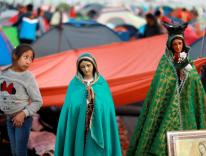In August, the Catholic Common Ground Initiative, founded by the late Cardinal Joseph Bernardin, celebrated its tenth anniversary in Chicago. When I mentioned the anniversary to people at Notre Dame, I got a puzzled look, and a query: “Oh, is that still around? What does Common Ground do, anyway?” I have long struggled to give a pithy answer to this question. I finally found what I was looking for in the anniversary Mass homily given by Cincinnati Archbishop Daniel Pilarczyk, who chairs the Initiative’s steering committee: “The Catholic Common Ground Initiative,” he said, “is committed to keeping the members of the church, all of them, of whatever ecclesial stripe they may be, on speaking terms with one another.”
As Pilarczyk emphasized, “Called to Be Catholic,” the foundational document of the Initiative, provides an outline agenda for civilized Christian conversation. The Initiative’s “efforts to get people back on speaking terms are not the efforts of outsiders trying to mediate a family fight,” the archbishop said, “but of members of the family of Christ trying to ameliorate the quality of the ongoing family conversation.” The celebration of the Eucharist is at the heart of every Common Ground event. The grace of the sacrament supports and perfects nature: from a psychological perspective, it’s just a lot harder to demonize someone after you’ve seen them hunched over in prayer.
Common Ground doesn’t promise miracles. At its best, it opens possibilities of conversation; it can’t compel conversations to take place. I remember a panel on religious life at Common Ground’s 2002 annual conference dedicated to “Participation in the Church.” Two of the panelists were strong and insightful religious women: Sr. Doris Gottemoeller, RSM, former president of the Sisters of Mercy of the Americas and Mother Mary McGreevey, RSM, a founding member of the Sisters of Mercy of Alma, Michigan, which broke away from the Sisters of Mercy of the Americas in the 1970s. Sr. Doris was the former president of the Leadership Conference of Women Religious, which embraced the reexamination of religious life after the Second Vatican Council, while Mother Mary was the president of the Council of Major Superiors of Women Religious, which sought to preserve more traditional practices. Mother Mary was in full habit; Sister Doris wore a blouse and skirt and a simple crucifix. Despite their differences, they articulated similar struggles and similar aspirations for community life. Then a lay member of the audience asked the sixty-four-thousand-dollar question: “You obviously have so much in common-including a deep love for the church. Why are there two sets of Sisters of Mercy and two conferences of women religious?” No one on the panel said a word. The question hung in the air. At least it was asked.
Things have changed over the past ten years, in both the church and the world. What new challenges does the Common Ground Initiative face? I see three:
1. Changing Generations, Changing Issues. Common Ground was put together by Catholics whose identities were forged in the tumult of the Second Vatican Council. But time marches on. What are the issues that divide Catholics in Generation X? My own sense is that there will be new fissures between priests and the laity. Sociologists tell us that a small group of “JPII Catholics” see the world as a battleground between the culture of life and the culture of death; that group is likely to supply most of the priests. But the majority of Gen-X Catholics seem to be negotiating a less confrontational relationship between the culture and the church, placing less emphasis on a pure and distinct Catholic identity. What will that tension do to parish life in the next twenty years?
2. Common Ground in the Blogopsphere? There were few, if any, Catholic blogs ten years ago. Now, they seem to be everywhere, even at Commonweal. I have my doubts that blogs will help Catholics of different stripes remain on speaking terms. There is none of the non-verbal, face-to-face communication needed to build trust and patience. Blogging doesn’t place a premium on nuance, tact, or reflective judgment. It’s a shoot-from-the hip kind of medium.
3. The Emergence of Ideological Enclaves. Pilarczyk noted that one thing the Initiative has learned is that “some people are simply not interested in conversation with persons who have differing opinions.” An increasing number of people tend to watch only CNN or Fox News, EWTN or the Daily Show, to read only the New York Times or the Wall Street Journal. People seem to aspire to live on the Upper West Side of Manhattan or in Ave Maria Town. If you don’t see people you disagree with, you don’t have to deal with them.
In the end, though, if we are going to be Catholic, we have to be catholic-we need to find ways of communicating with one another as members of the same Body of Christ, despite our differences. The practical strategies developed over the past decade by the Common Ground Initiative are only sustained by the deep theological conviction that there is but “one body and one Spirit” (Eph 4:4).
Please email comments to [email protected] and join the conversation on our Facebook page.
Share
Previous Story
A Swift-boating in Jersey
Next Story
Juan Cole weighs in on Benedict's apology


